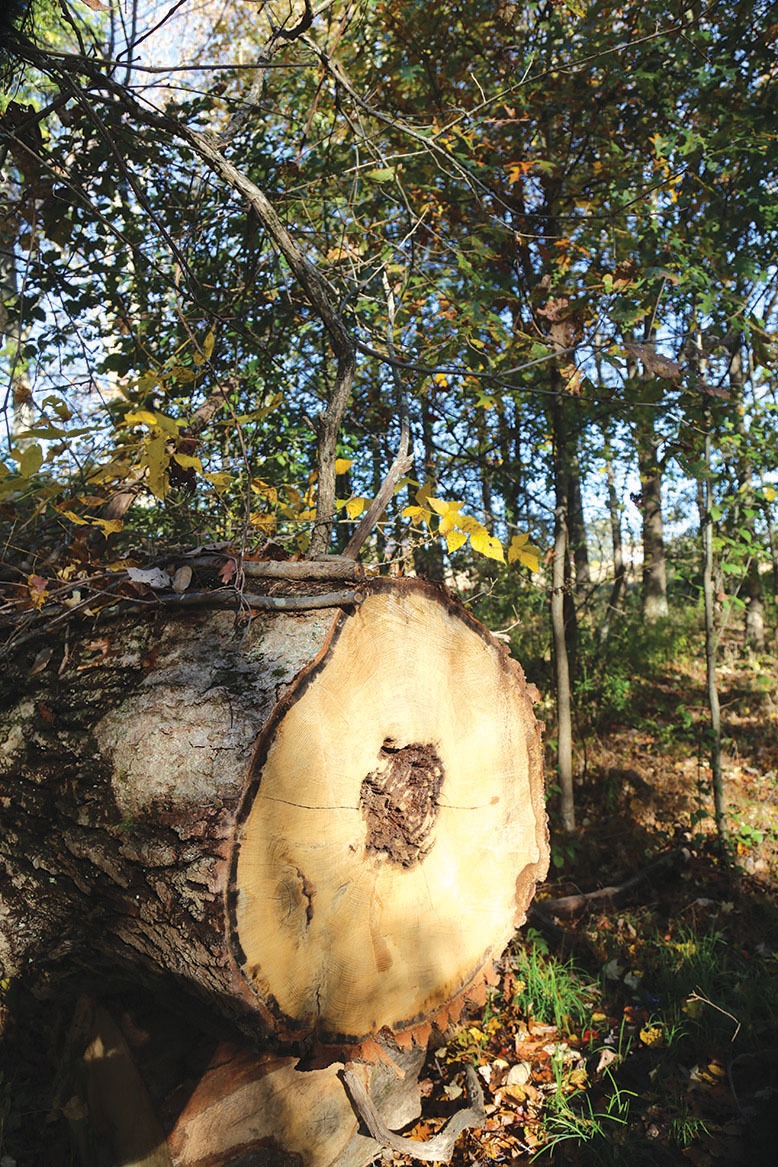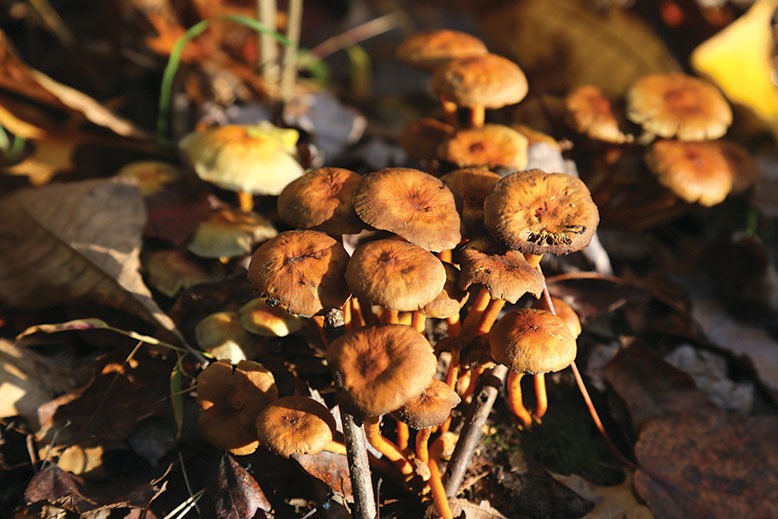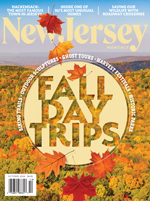
A felled tree in the Great Swamp shows its age with its many rings. Photo by Laura Baer
We can thank the Wisconsin Glacier for the Great Swamp. Some 18,000 years ago, the massive glacier sliced through what is now northern New Jersey. As it receded, it left behind the basin known today as the Great Swamp.
We can also thank the modern-day activists who won a battle against the Port Authority of New York, which, in 1959, revealed a plan to drain the swamp and build a jetport with four 10,000-foot runways. After the plan was ditched, the Great Swamp was named a national wildlife refuge, a designation for which local wildlife and humankind are eternally grateful.
[RELATED: The Best Fall Day Trips in New Jersey]
While the Great Swamp is a low-lying area, it is more than swamp. Its 7,800-acre footprint includes woodlands, grasslands, brooks and ponds that provide habitat for a wealth of birds (244 species), mammals, amphibians, reptiles and fish, many listed as endangered.
Bordering Basking Ridge, New Vernon, Green Village, Madison, Chatham, Long Hill and several other Morris and Somerset county municipalities, the Great Swamp is easy to reach from I-287. There are several entry points for hikers. Trails can indeed be swampy after rain, but many have boardwalks that keep walkers above the waterline. All are flat; this is more strolling than hiking.
The 2-mile loop from the Wildlife Observation Center off of Long Hill Road (in the center of the refuge) includes sections of boardwalk and gravel trail. A spur leads to the impressive Garden Club of America duck blind. It’s a great spot for patient observation of the plentiful birds and waterfowl on the marsh below. Bring binoculars.

The Great Swamp’s rich soil produces a flourish of fungi. Photo by Laura Baer
At the northwestern corner of the refuge, the White Oak Trail from the Helen C. Fenske Visitor Center (check website for hours) is a short walk, mostly on boardwalk through a marshy forested area. Longer trails into the heart of the wilderness section of the refuge can be accessed from the Woodland Road parking area in Green Village. This is advisable only during dry periods; my companion and I tried the blue trail, but found it swamped.
Several trails start at the Outdoor Education Center at the eastern edge of the refuge. The orange trail follows a boardwalk along a pond to a pleasant waterside viewing area where we spotted wood ducks and snapping turtles among the abundant lilies and cattails.
When you visit, comfortable, waterproof footwear is advisable. Dogs are barred from the trails.
Consider adding a stop at the Raptor Trust, a bird-rehabilitation center at the western edge of the refuge (1390 Whitebridge Road, Basking Ridge). Visitors can view the center’s resident hawks, owls, eagles, falcons and vultures. The center is open daily, 9 am–4 pm, weather permitting; admission is free.
For more information, visit the Great Swamp’s website.
No one knows New Jersey like we do. Sign up for one of our free newsletters here. Want a print magazine mailed to you? Purchase an issue from our online store.



